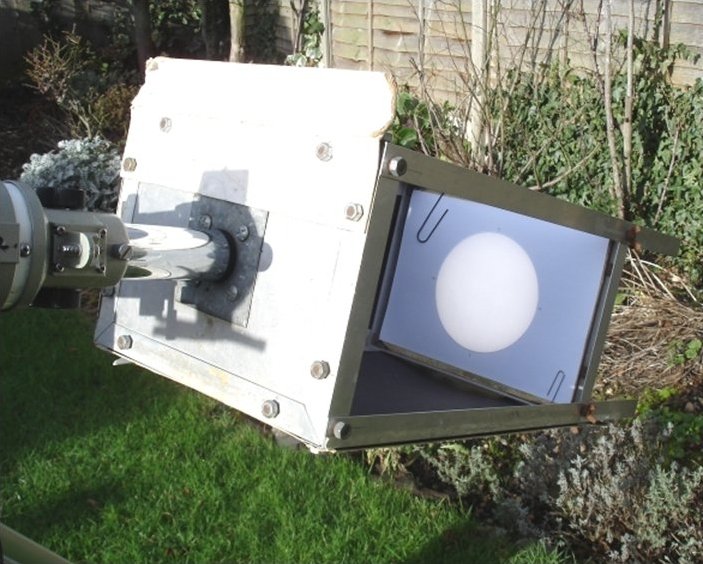Sunspot groups without active region numbers
2021 May 31

Introduction
Most solar observers and organisations, whether they are amateur or professional, refer to sunspot groups by their active region (AR) numbers. This is the case for the BAA. The AR number is provided in the daily Solar Region Summary (SRS) from the National Oceanic and Atmospheric Administration (NOAA) and Space Weather Prediction Centre (SWPC). In particular, the SRS report compiled by SWPC is a joint product of NOAA and the US Air Force, issued daily at 00:30 UTC, providing a detailed description of sunspot active regions observed during the preceding day. It is created by SWPC after analysis and compilation of all individual reports from the USAF Solar Optical Observing Network (SOON).1
Personal white-light disc drawings for around ~180 days per year are analysed to determine parameters such as the number of groups, g, and the relative sunspot number R. As part of this analysis, all the groups visible are identified and then, based on their heliographic latitude and longitude as well as group type, assigned an NOAA AR number. This paper examines those groups identified from observations during the 10-year period of 2009 to 2018, i.e. for most of Solar Cycle 24, for which it has not been possible to assign an AR number. The author begins by explaining how the white-light disc drawings are made, before describing how individual groups are identified. The main section of the paper presents those groups for which it has not been possible to assign an AR number (8% of all observed groups). Finally, the groups are analysed to determine why they might not have been included in the daily NOAA SRS reports.
WARNING
Never look at the Sun with the naked eye or with any optical instrument unless you are familiar with safe solar observing methods.
White-light observations
A Vixen 80mm ƒ/11 refractor on a driven equatorial mount is used to project the image of the Sun for daily observation whenever possible. A projection box is attached to the eyepiece holder as shown in Figure 1. A 20mm Plössl eyepiece is used to project the whole of the solar image on a sheet of paper, with a blank 6-inch (152mm) disc placed at the far end of the projection box. The north, east, south and west points are indicated on this disc. A backing sheet of paper is marked with a number of horizontal and vertical lines behind the blank disc. One of these horizontal lines is aligned along the east–west direction to aid in orientating the projection box. The other lines are useful when making a sunspot drawing. The steps to set up the telescope and make a disc drawing are as follows.
– Check that the telescope mounting is level and correctly aligned in azimuth; place an eyepiece in its holder and remove the telescope cap.
– Use the shadow of the Sun on the top of the projection box to ensure a solar image appears on the sheet of paper at the far end of the box (this avoids looking in the direction of the Sun).
– Focus the image and ensure it fits in the 6-inch circle. If it does not, the distance between the eyepiece and the sheet of paper will need adjusting.
– With the telescope drive switched off, place a small sunspot on one of the east–west lines of the sheet behind the blank disc and let it drift for a minute or so. If the sunspot moves above or below the line, rotate the projection box in the appropriate direction. Repeat until the sunspot moves along the east–west line before starting the drawing.
– Switch on the telescope drive and place the Sun within the disc circle. The drawing should then be made, first by marking the location of a sunspot in each group and checking they are correctly located within the disc. Then draw all the other sunspots, including the outline of penumbral spots. Draw any faculae present in yellow.
– Note the date and time (in UT) with the drawing, as well as the observing conditions.
Once the telescope and projection box have been set up, a drawing can take between five and 20 minutes to make, depending on the number and types of the sunspot groups visible. The drawing is then scanned and annotated, ready for various measurements to be made: the number of groups, sunspot number, quality number, sunspot heliographic latitude and longitude, as well as sunspot area. An example drawing, displayed using the Helio Viewer software,2 is shown in Figure 2. This shows the largest sunspot group of Cycle 24, AR 12192.3


Note that to ensure a consistent set of sunspot measurements over a long period of time such as a solar cycle, the same telescope and eyepiece are used (i.e., no other eyepieces are used to obtain a higher magnification).
(Login or click above to view the full illustrated article in PDF format)
| The British Astronomical Association supports amateur astronomers around the UK and the rest of the world. Find out more about the BAA or join us. |
